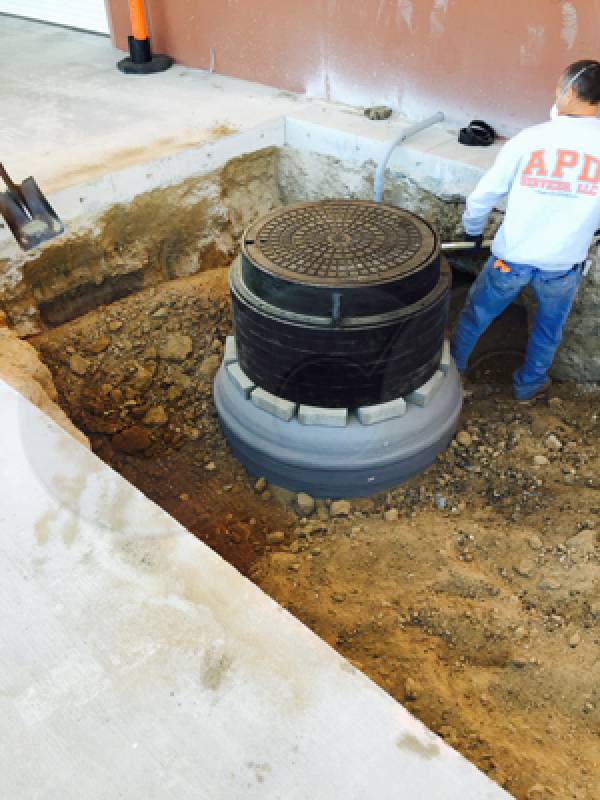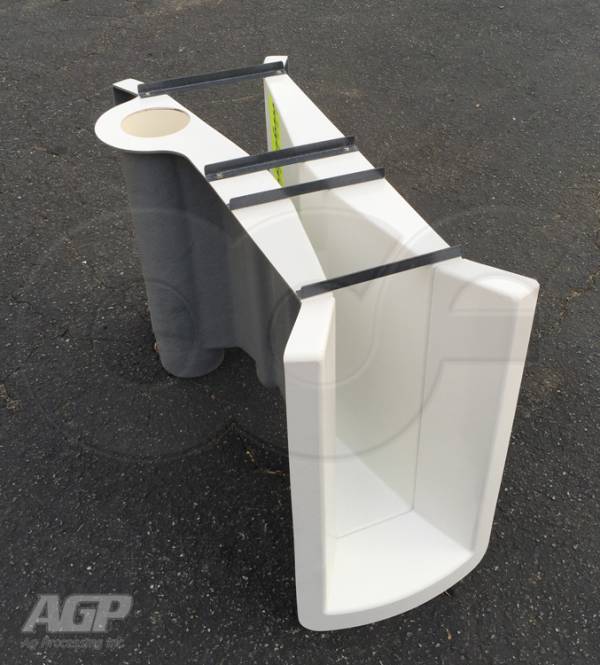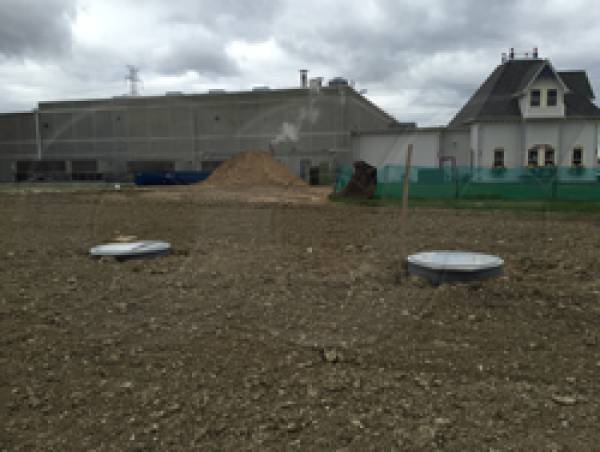This website uses a variety of cookies, which you consent to if you continue to use this site. You can read our Privacy Policy for
details about how these cookies are used, and to grant or withdraw your consent for certain types of cookies.
Measuring Sewer Flows with Flumes in Existing Manholes
One of the most common uses for flumes is to measure the flow of sewage though collection systems.
While we may tout the advantages of Packaged Metering Manholes - and they are considerable - the higher initial cost means that when an existing manhole is available, a flume is more commonly retrofitted into it rather than a new structure being installed.
Palmer Bowlus Flumes
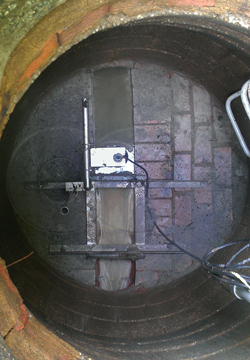 For good, average flows, the Palmer Bowlus is the flume of choice when measuring sewage. Cheaper than other flume types and relatively compact, the Palmer Bowlus flume was specifically designed to measure sewage flows in pipes and conduits. The flume does require a long upstream straight run, 25 pipe diameters, but in collection systems this can usually be easily accomplished.
For good, average flows, the Palmer Bowlus is the flume of choice when measuring sewage. Cheaper than other flume types and relatively compact, the Palmer Bowlus flume was specifically designed to measure sewage flows in pipes and conduits. The flume does require a long upstream straight run, 25 pipe diameters, but in collection systems this can usually be easily accomplished.
For standard diameter manholes, the largest Permanent style Palmer Bowlus flume that will fit is:
- 48" diameter manhole - 12" Palmer Bowlus (3D+1" style)
- 60" diameter manhole - 18" Palmer Bowlus (3D+1" style)
- 72" diameter manhole - 21" Palmer Bowlus (3D+1" style)
- 96” diameter manhole – 27" Palmer Bowlus (3D+1" style)
Larger sizes of Insert and Cutback style Palmer Bowlus flumes may fit each manhole diameter above, but Openchannelflow generally does not recommend their use as the flow tables / equations do not take into consideration the narrower wetted cross-section of those two styles.
Parshall & Montana (Short Parshall) Flumes
 The Parshall flume - originally developed to measure irrigation / watershed / water rights flows - has been successfully used to measure sewage for decades.
The Parshall flume - originally developed to measure irrigation / watershed / water rights flows - has been successfully used to measure sewage for decades.
As the flume is longer, the range of useful sizes of Parshall flumes that can fully contained in a standard diameter manhole is much smaller than the Palmer Bowlus flume:
- 48" diameter manhole - 3" Parshall with staged end adapters
- 60" diameter manhole - 6" Parshall with staged end adapters
- 72" diameter manhole - 6" Parshall with staged end adapters
- 96” diameter manhole – 9” Parshall with staged end adapters
The staged end adapters mentioned above are specially curved end connection that allow the Parshall flume to be slid into place in a manhole and which eliminate there need to form a transition into / out of the flume.
Montana flumes, a modification of the Parshall flume where the throat and discharge section of the flume are removed, can be used where the is a change in elevation between the inlet and outlet pipe elevations. Montana flumes can allow both flow measurement and act as a drop manhole at one site.
Trapezoidal Flumes
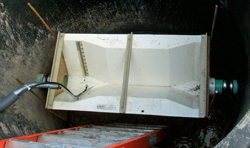 Trapezoidal flumes are less commonly used to measure sanitary sewage flows than the Palmer Bowlus or the Parshall. While they have good low-end flow characteristics, the flumes quickly become wider / longer than what can be accommodated in a concrete manhole.
Trapezoidal flumes are less commonly used to measure sanitary sewage flows than the Palmer Bowlus or the Parshall. While they have good low-end flow characteristics, the flumes quickly become wider / longer than what can be accommodated in a concrete manhole.
- 48" diameter manhole – 2” 45º WSC with staged end adapters
- 60" diameter manhole - 2” 45º WSC with staged end adapters
- 72" diameter manhole – 2” 30º CSU with staged end adapters
- 96” diameter manhole – 12” 45º SRCRC with staged end adapters
Cutthroat
Cutthroat flumes are sometimes used to measure sewer flows, although not nearly as regularly as Palmer Bowlus or Parshall flumes. The applications where the Cutthroat is used are usually where the gradient is flat or where the somewhat higher submergence transition of the Cutthroat flume is necessary.
HS / H Flumes
Unscreened sanitary solids create problems for small opening HS and H flumes. The need for free spilling discharge can also cause problems. As a result, it is much more common to see Montana (Short Parshall) flumes used where the is free-spilling discharge off the end of the flume.
RBC Flumes
While there is no technical reason why an RBC flume couldn’t be used to measure sewer flows, in practice there are other flumes that have been successfully used in the past.
Related Blog Posts
Explore more insights in our blog.

LOCATIONS IN ATLANTA, GA & BOISE, ID


